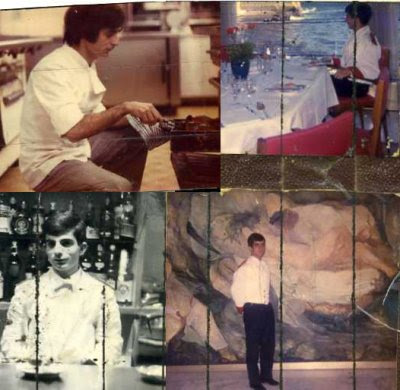
cuoco diplomato ; to commis de rang a chef d'etage a chef de rang , Sommelier to Hamburg , jobs by hotels : Napoli -Taormina - Acitrezza - Parigi - Stresa - Hamburg - Frankfurt/A Main # Milano # Blogspot-TumbIr-my Taste -Instagram-Google # photos recipes # r 2013 a 2024 # blog is from Google - inpaginated and built by chefAdrianoMennillo.
e già ?? ...

# and already ??...CLEANING the FISH? BEWARE of ANISAKIS_# ANISAKIS, THE TRUE GOURMET FIEND. WHAT FISH LIVES IN, HOW TO FIGHT IT. MANY CHEFS SHOULD KNOW THIS IN THEIR RAW FISH RECIPES.Anisakis is a parasite found in many fish: scabbardfish, dolphinfish, swordfish, tuna, sardines, herring, anchovies, hake, cod, monkfish, shellfish, cephalopods, mackerel, and anchovies. This parasite is present in fresh fish, and the larvae can implant on the wall of the human gastrointestinal tract, from the stomach to the colon. This parasitic worm attacks the mucous membranes resulting in acute or chronic parasitosis that can occur as early as a few hours after ingesting raw fish. It manifests with intense abdominal pain, nausea and vomiting, and in severe cases can even generate ulceration and perforation of the stomach wall. These problems occur only if you eat raw fish (if the fish is frozen or cooked, this parasite dies). Or, if one does not want to give up the goodness of raw fish, immediate evisceration of the fish (which, however, is never practiced), or methods based on exposure to high or very low temperatures (blast chiller) are sufficient when cleaning the fish: - immediate quick freezing: the parasite dies after 24 hours at -20 °C - exposure to high temperatures: the parasite dies in 15 minutes at 60 °C Recipes with raw fish, Italian-style crudités (with extra virgin olive oil, salt and pepper), shellfish and crustaceans "at the drop of a hat," freshly seared or sesame-seared tuna, and fashionable and ethnic Japanese "sushi and sashimi" are all opportunities to fall into the Anisakis trap and hopefully get away with an infection that resolves only with symptomatic treatment. One should always ask the chef or restaurateur if such a procedure is applied to the fish in question. Eating raw is good, but with "downed" fish is better!